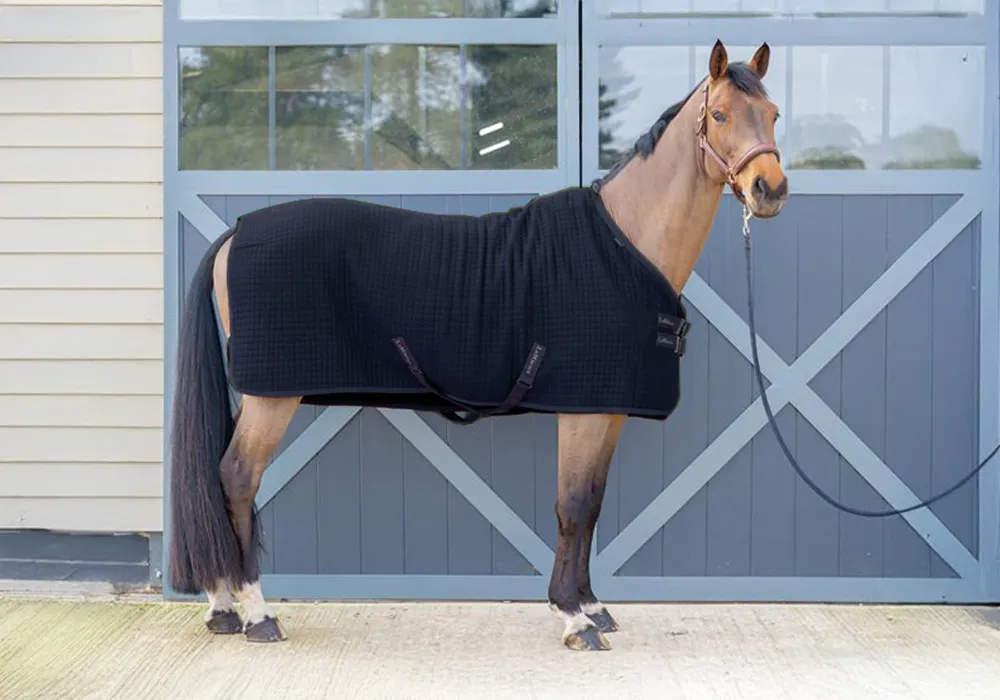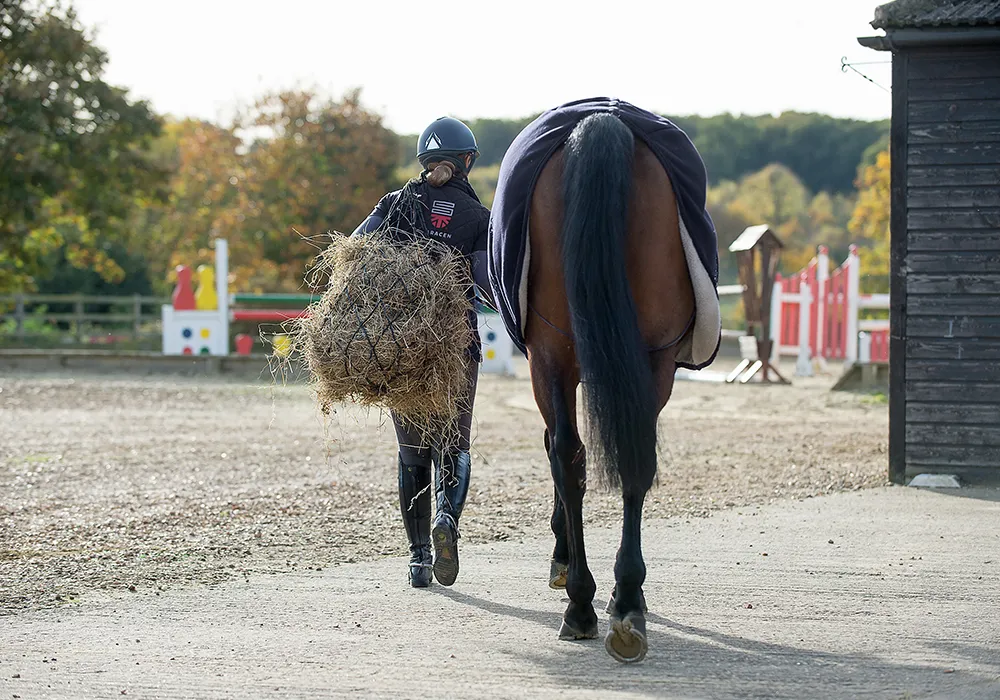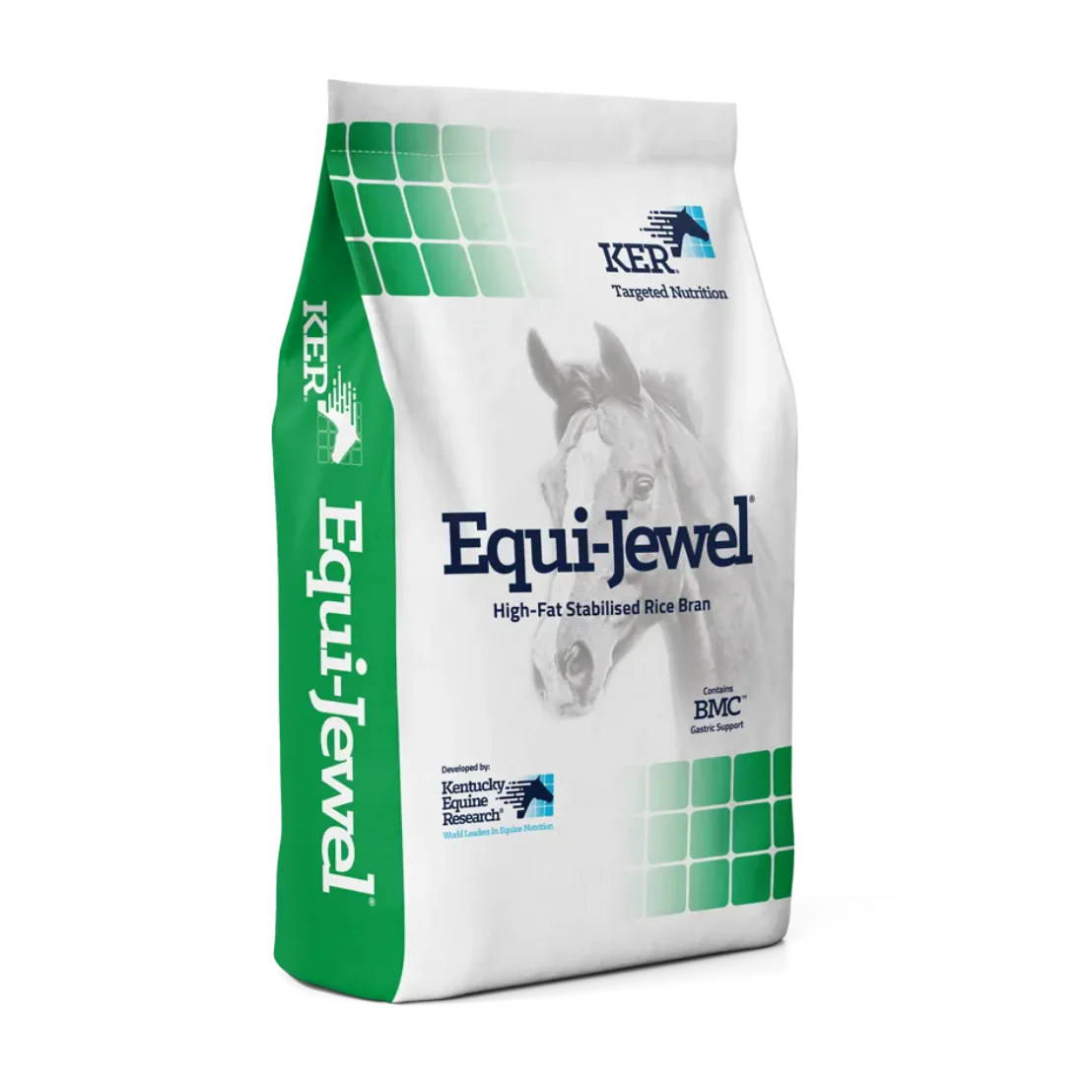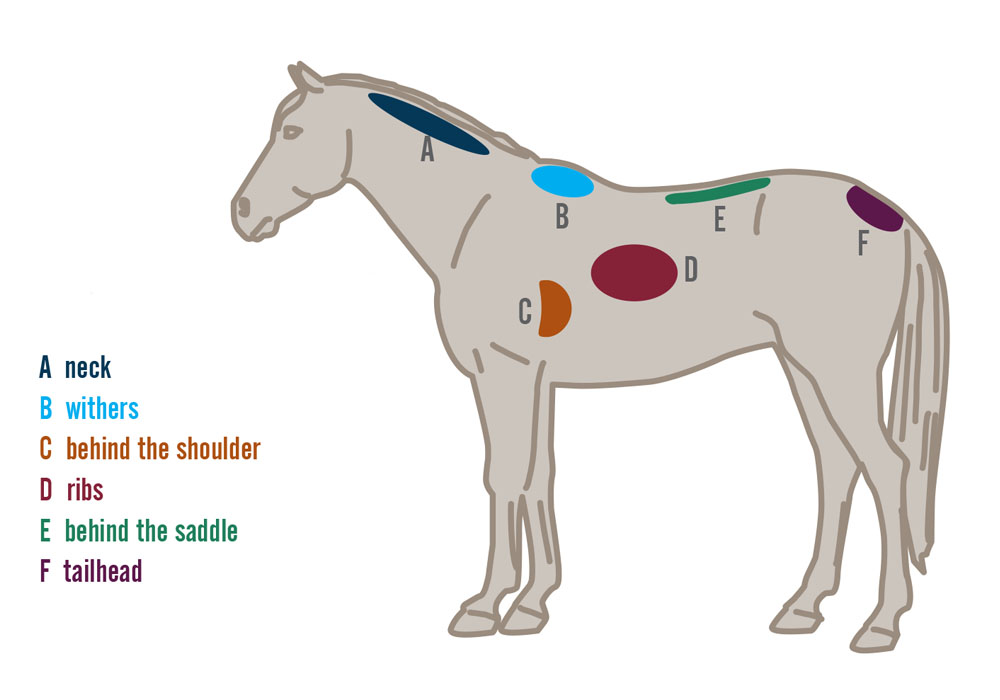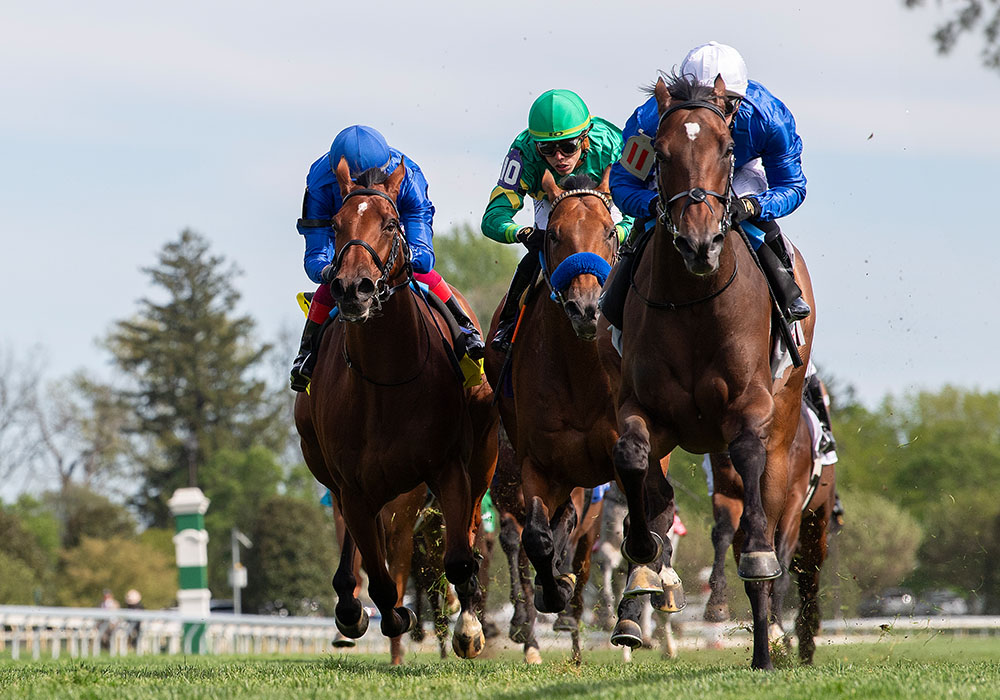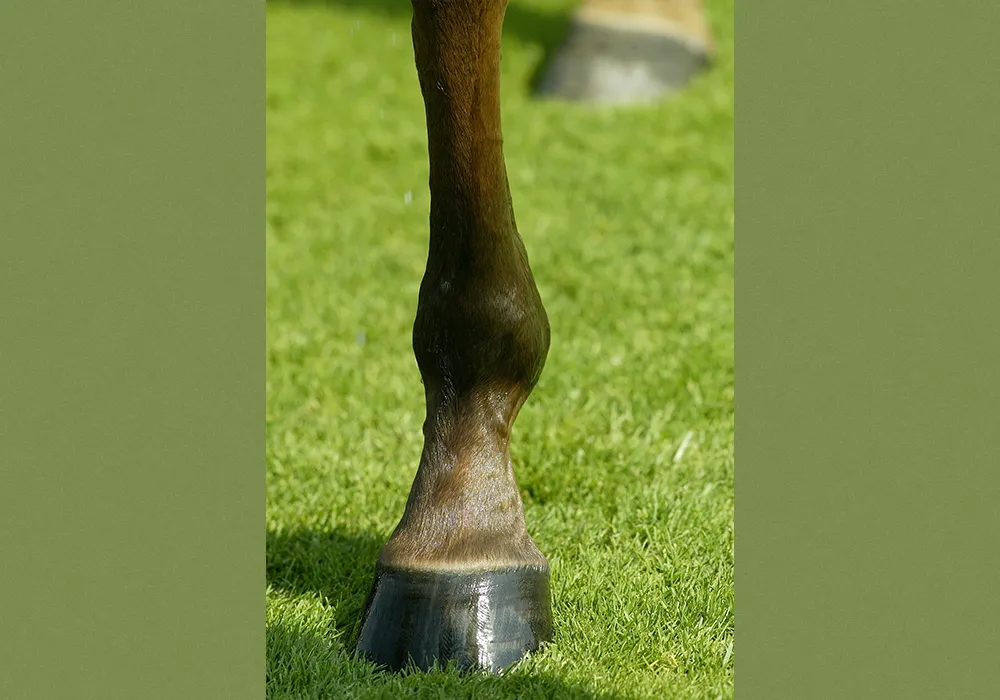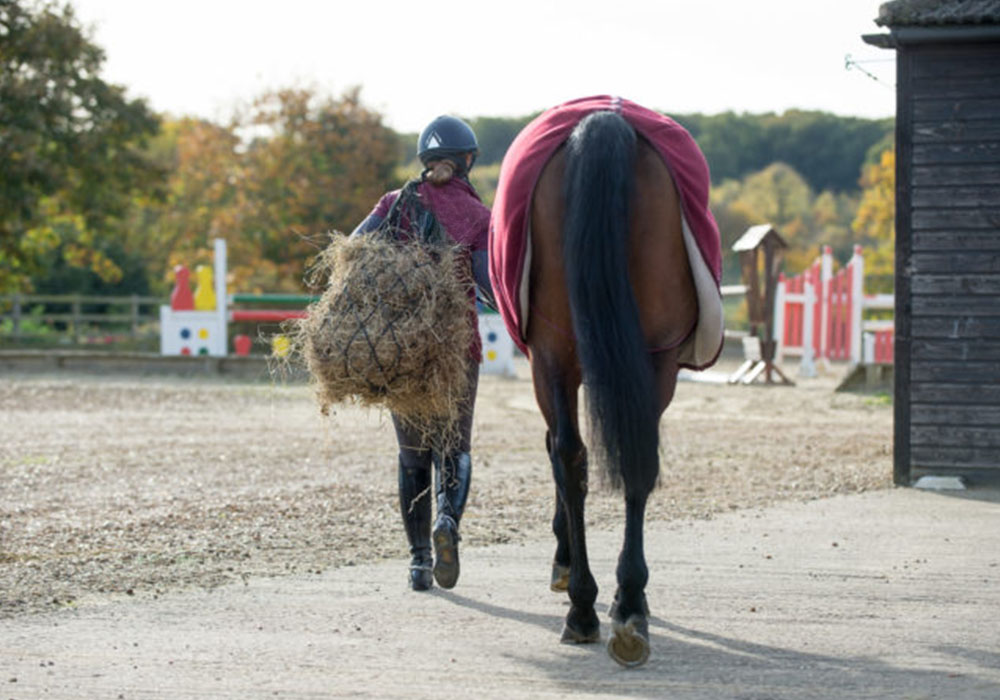Feeding the Ex-Racehorse: the Importance of Forage

The diet of a racehorse is much lower in forage than leisure and competition horses, and they may not have been turned out to grass for many months. It is also advisable to provide your new horse with ad-lib hay, but you may find that to start with he does not eat everything you offer. Thoroughbreds can be fussy feeders and he may take a few days or weeks to get used to his new diet, so be patient.
Forage is essential to satisfy both the horse’s physical and psychological needs. The physical need for forage is to provide bulk, help with weight maintenance and to combat several issues such as preventing the intestines twisting and looping over each other (colic); aiding the passage of food through the gut eliminating gas bubbles; to help maintain a stable pH in the hindgut of the horse and to meet a large proportion of the horse’s energy (calorie) intake. The psychological need is that the horse has a natural “drive” and need to chew and “trickle feed”. Restricting this requirement may lead to the development of behavioural issues, such as wood chewing and crib biting, as well as physical issues, such as gastric ulcers.

HOW MUCH FIBRE SHOULD I FEED?
The general recommendation is that horses should receive a minimum of 1.5kg forage per 100kg body weight (1.5% of BW), e.g. 500kg horse should receive a minimum of 7.5kg forage daily. Bear in mind however that this is the minimum amount you should be feeding and ideally forage should be fed on an ad-lib basis. This means that if grazing is poor there is always access to hay or haylage in the field, and if the horse is stabled there is always some hay in the stable in the morning showing the horse has had enough to last him through the night. Having said this with ‘good-doers’ and particularly greedy horses, this is not always practical, so don’t hesitate to seek professional advice in these cases.
Fibre Fact
Feeding a litre (approx 1 Stubbs scoop) of chaff before riding is recommended as it forms a mat on top of the stomach acid, which reduces the acid splashing onto the sensitive areas of the stomach lining. In addition, feeding chaff slows the rate of passage of the feed through the digestive system helping to ensure the horse can fully break down and utilise the feed in the correct areas of the gut. Make sure your horse is not left for long periods with nothing to eat especially when stabled overnight. Even if you are away at an event, make sure that you allow your horse regular access to a haynet or to nibble at some grass or a bucket of chaff.
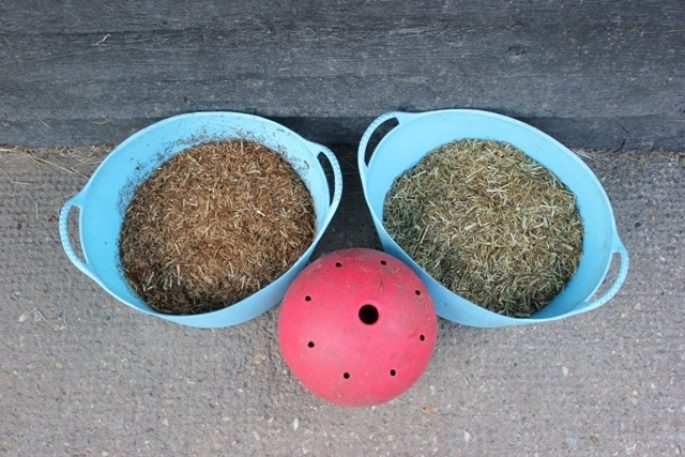
INCREASING FIBRE INTAKE FOR HORSES WITH POOR APPETITES
During periods of confinement, horses can “shy away” from eating their full intake of long-stem forage and we advise owners to look to forage replacers to increase their fibre intake. One useful trick is to offer the horse a cafeteria style of forage alternatives. Horses are natural browsers and by offering them a variety of fibre sources, they tend to move from one source to another, mimicking their natural “browsing” behaviour. This has been shown, in a number of horses, to stimulate appetite and consequently have a positive impact on the amount of long-stem fibre eaten. Simply place large buckets of different fibre sources around the stable, in addition to hay and/or haylage. The different types of forage sources can include short chop chaffs, such as Saracen Molassed Chaff, Super Fibre cubes and soaked sugarbeet. Super Fibre Cubes can even be placed in a treat ball to further increase natural foraging behaviours and extend eating time.
Need Guidance?
If you would like any further information on feeding your horse or pony please feel free to contact our nutritional team on +44 (0)1622 718 487, email info@saracenhorsefeeds.co.uk or fill out our Feed Advice Form.
